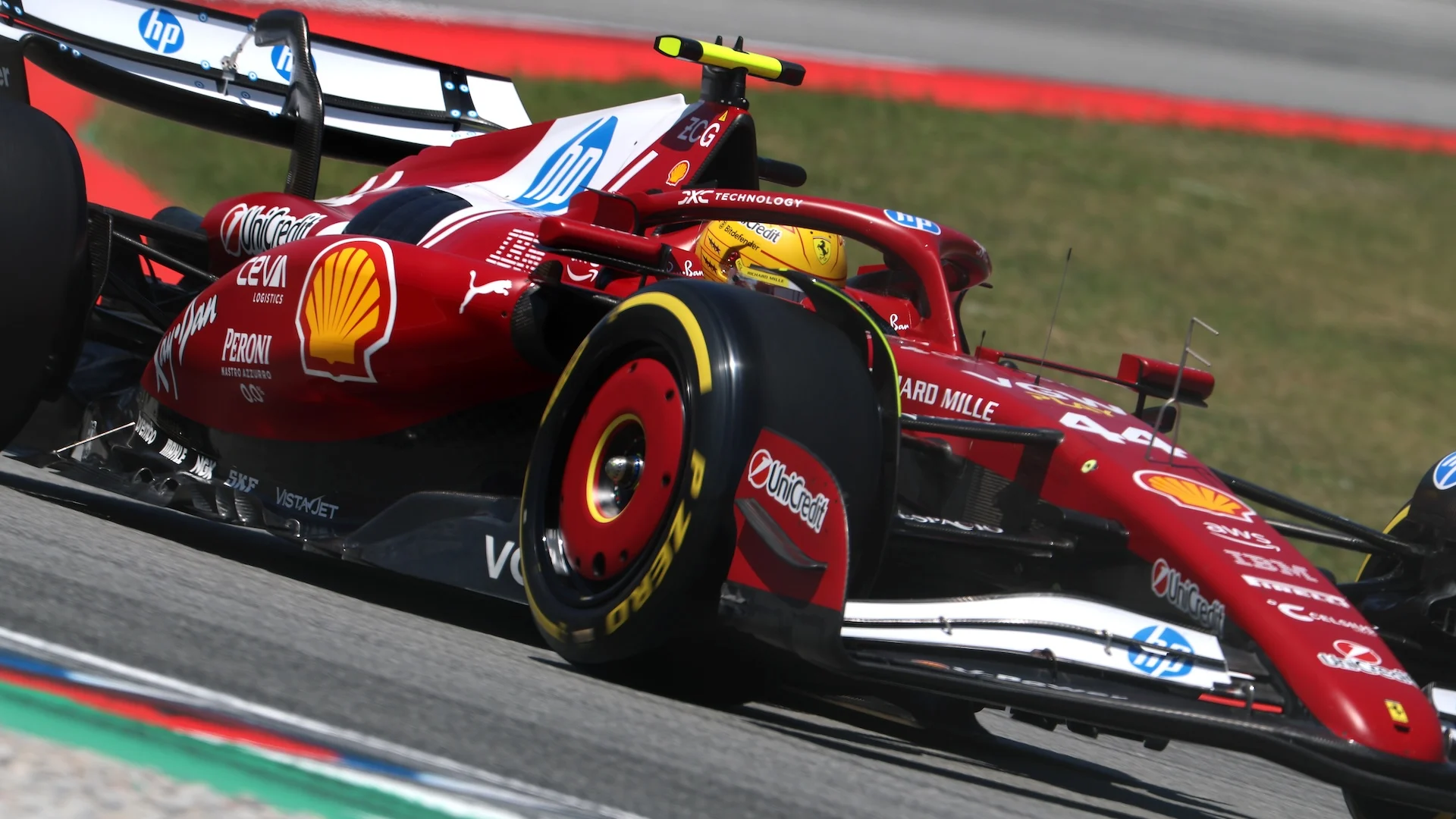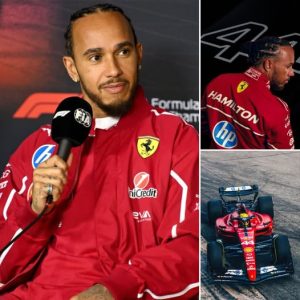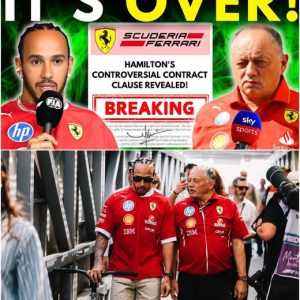The summer break is often a time for rest in Formula 1, but the 2024 mid-season pause has been anything but quiet. From swirling retirement rumors around Lewis Hamilton to strategic changes at Red Bull and heated debates over Yuki Tsunoda’s future, the paddock is buzzing. And with the 2026 regulation reset on the horizon, the long game is already being played.
Hamilton Retirement Rumors Quickly Quashed
Speculation about Lewis Hamilton’s immediate future erupted this week when a cryptic social media post teased an “announcement” for August 8. Given Ferrari’s turbulent season and Hamilton’s own admission that the Hungarian Grand Prix had been “useless” for him, some feared he might walk away mid-season.
The truth was far more mundane: the announcement turned out to be the launch of a new flavor in Hamilton’s non-alcoholic tequila brand, Almave. Fans breathed a sigh of relief, but the episode highlighted the mounting tension surrounding Hamilton’s first year at Ferrari.
Ferrari’s SF-25 has proven a tricky beast, and while Charles Leclerc has also struggled, Hamilton’s adaptation has been especially difficult. Sources inside Maranello suggest that for 2026—when the new technical regulations arrive—Ferrari’s design direction could shift more toward Hamilton’s driving style, thanks to key hires like Loïc Serra, a former Mercedes colleague who knows Hamilton’s preferences well.

Ferrari’s 2026 Bet on Hamilton’s “DNA”
Hamilton joined Ferrari in 2025, stepping into a car largely developed with feedback from Leclerc and Carlos Sainz. This meant limited influence on the SF-25’s characteristics, which has amplified some of Hamilton’s well-known dislikes: heavy ground-effect handling, understeer in low-speed corners, and Ferrari’s aggressive engine-braking feel.
Loïc Serra, now heading Ferrari’s technical department, is expected to ensure Hamilton’s “DNA” is present in the 2026 car. The removal of ground-effect tunnels in the upcoming regulations could naturally suit Hamilton’s style, potentially reviving his one-lap confidence and consistency in race trim.
Ferrari team principal Frédéric Vasseur has made the target clear: finish 2024 second in the Constructors’ standings and go all-in to win the 2025 championship, building momentum into the new era.

Red Bull: Strategic Strengths and Operational Weaknesses
While Ferrari wrestles with its chassis, Red Bull faces a different kind of challenge. Out of Red Bull’s last 65 wins, Max Verstappen has claimed 60—an astonishing record that underlines both his dominance and the gap to his teammates.
Yet, behind the scenes, Red Bull’s fabled operational sharpness has dulled slightly. With long-time sporting director Jonathan Wheatley departing and head of strategy Will Courtenay moving to McLaren (following in the footsteps of technical recruit Rob Marshall), the team’s execution hasn’t been as flawless. Pit stops and strategy calls—once gold standard—have shown cracks, particularly without the advantage of an untouchably fast car.
The team recently posted a job opening for a senior strategy engineer, prompting speculation about internal shifts. While star strategist Hannah Schmitz remains in place, the loss of experienced lieutenants has forced Red Bull to rebuild part of its competitive infrastructure.
McLaren’s Resurgence and Norris’s Milestone
If any team has capitalized on Red Bull’s slight dip, it’s McLaren. Since introducing a major upgrade package in Canada, the team has taken four consecutive 1–2 finishes, propelling them firmly into championship contention.
Lando Norris is on the brink of a historic milestone: by the Qatar Grand Prix later this year, he will surpass David Coulthard as McLaren’s most experienced driver in terms of race starts. Considering the team’s legendary alumni—Ayrton Senna, Mika Häkkinen, Fernando Alonso, and Lewis Hamilton—this achievement speaks volumes about Norris’s consistency and longevity.
McLaren’s transformation, driven in part by technical recruits like Marshall from Red Bull, positions them as perhaps Ferrari’s biggest rival for 2025—and potentially the 2026 regulation change.
Tsunoda Under Fire: Villeneuve’s Harsh Verdict
Former world champion Jacques Villeneuve made headlines by branding Yuki Tsunoda as “probably the worst” of Verstappen’s Red Bull teammates, citing underperformance despite years of F1 experience. Tsunoda’s promotion to the senior Red Bull team earlier this year came with high expectations, but crashes and inconsistency have hurt his standing.
Critics argue the mid-season switch from Liam Lawson to Tsunoda was unfair to both drivers, depriving Tsunoda of pre-season preparation and Lawson of a sustained opportunity. Supporters point to the Hungarian Grand Prix—where Tsunoda ran closer to Verstappen than any teammate since Daniel Ricciardo in 2017—as evidence of untapped potential.
The second half of the season will likely decide Tsunoda’s future. Failure to improve could cost him his seat in 2026, if not sooner.
Ferrari’s Pole Conversion Problem
One area Ferrari continues to struggle is turning pole positions into race wins. Leclerc’s career conversion rate stands at just 5 wins from 27 poles—a statistic that, while not entirely his fault, underscores the team’s persistent race-day shortcomings.
In the ground-effect era, Leclerc and Verstappen dominate qualifying statistics, with 49 poles between them. The rest of the grid combined accounts for only 33. Yet without strong race pace and execution, Ferrari’s qualifying strength remains a squandered weapon.
Christian Horner and the Red Bull Power Dynamic
Away from the track, Christian Horner’s position remains a subject of paddock intrigue. Bernie Ecclestone recently suggested Horner was still “in shock” after recent internal conflicts and that any potential involvement in the Alpine project—especially in an ownership capacity—was unlikely. Ecclestone also labeled Red Bull’s handling of certain personnel departures as “ruthless,” though such decisiveness has long been part of the team’s identity.
Whether Horner stays, steps aside, or seeks a role elsewhere, his next move could influence Red Bull’s competitiveness in the early years of the 2026 regulations.
The 2026 Equation: Three Key Factors for Hamilton
For Hamilton’s dream of an eighth world title to remain alive, three elements must align:
His Own Pace – While no longer at his 2021 peak, Hamilton remains capable of elite performance in the right machinery. His consistency, racecraft, and ability to execute over a season remain assets.
Regulation Fit – The 2026 rules, which will eliminate current ground-effect tunnels, may naturally produce cars more in line with his preferred balance and responsiveness.
Ferrari’s Commitment to His Style – With Loïc Serra and other ex-Mercedes personnel in place, Ferrari appears committed to tailoring their design process to suit Hamilton’s strengths.
If even two of these three factors fall into place, Hamilton could re-emerge as a serious title contender. If all three align, the dream of surpassing Michael Schumacher’s record becomes more than just a romantic storyline.
Full Video:





